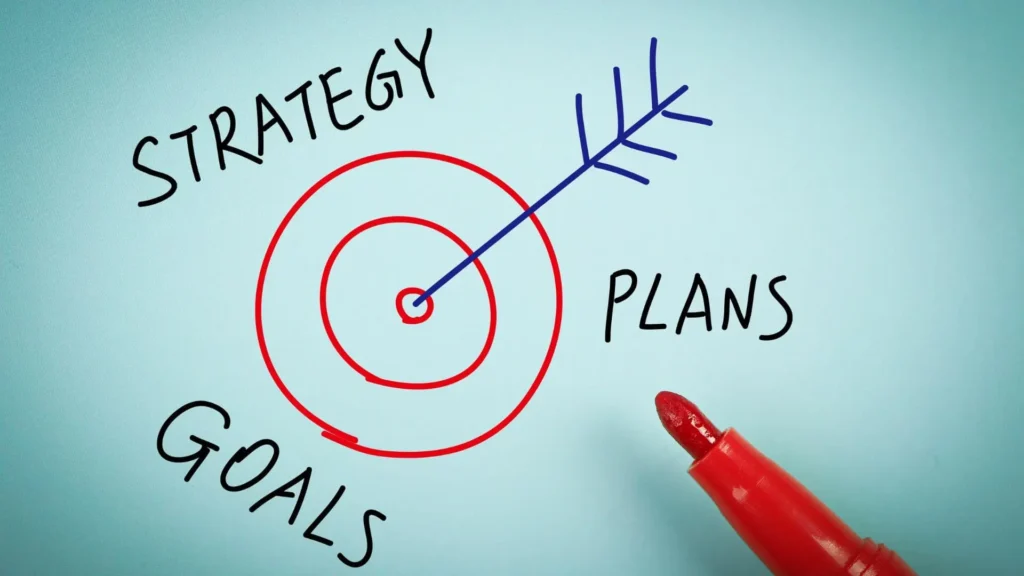10 Tips for Creating a Long Term Strategic Plan
Making a strategic plan is essential for setting objectives, identifying strategies that need to be taken, and organising resources to effectively achieve organisational goals. It functions as a road map for guiding actions and guaranteeing the long-term growth of a company or project.
There are mainly top 10 tips for creating a long term Strategic plans including Develop a true vision, Define competitive advantage, Define your targets, Focus on systematic growth, Make fact-based decisions, Long-term strategic business plan, Flexible strategy development, Be strategically inclusive, Invest time in pre-work, Measure your results and execute excellently.
What is a Long Term Strategic Plan?
A long-term strategic plan is a comprehensive plan of action that outlines the goals and objectives of a company over a number of years, usually many. In order to reach sustainable success and growth, it includes defining significant initiatives, setting strategic priorities, and aligning resources. Organisations can overcome challenges, utilise opportunities, and maintain focus on their long-term goals with the support of this particular type of plan.
Steps for creating a long term Strategic Plan
Developing a long-term strategic plan involves numerous essential actions to ensure its effectiveness. These procedures frequently involve doing a thorough study of the business’s present circumstances, creating a clear vision and mission, establishing specific long-term goals, creating practical strategies, allocating resources, evaluating progress, and making appropriate adjustments along the way. By following these actions, organisations can lay the groundwork for long-term success and growth.
Develop a true vision
Creating a true vision involves providing a clear and inspirational picture of what you expect to achieve in the future. This vision should reflect your most fundamental desires, values, and goals for your business or personal life. Create a real inspiring vision to motivate yourself and others, determine decision-making, and offer a feeling of purpose and direction. It is about discovering the future you really want and making it a reality.
Define competitive advantage
Defining competitive advantage is recognising and understanding the unique resources and features that differentiate your company from opponents. It involves recognising features of your products, services, or processes that give you a competitive advantage and improve client desirability. Knowing and applying your selling point allows you to differentiate yourself, get more customers, and keep differentiated from the competition. It is about understanding what makes you unique and leveraging that to succeed in your area of expertise.
Define your targets
Defining your targets means emphasising the particular goals and objectives you expect to achieve. It is about developing clear and specific objectives that are consistent with your vision and allows you to measure your progress towards success. By understanding your goals, you can focus your efforts, stay motivated, and take practical steps to achieve your goals.

Focus on systematic growth
Focusing on systematic growth involves developing a long-term strategic plan that outlines how your company will gradually grow and flourish over time. It is about developing a systematic strategy for growth that involves consistent and sustainable progress. By focusing on systematic growth, you can ensure that your company develops in a strategic and controlled manner, which leads to long-term success and stability.
Make fact-based decisions
Making fact-based decisions means employing precise and trustworthy data to inform your decisions and actions. It is about making important decisions based on data, evidence, and proven facts rather than preconceptions or views. By generating judgements based on facts, you might increase the likelihood of success while reducing the risks associated with ignorance.
Long-term strategic business plan
A long-term strategic business plan includes establishing goals, defining tactics, and giving a clear direction for your company over an extended period. By focusing on long-term strategy, you can provide the foundation for sustainable growth and guide your company towards its long-term goals. To guarantee your company’s long-term growth and profitability, you need to plan ahead of time, make informed judgements, and think strategically.
Flexible strategy development
Flexible strategy development is being adaptive and willing to modify your tactics in accordance with evolving circumstances or fresh data. It is about being able to adjust, refine, and update your plans as needed to effectively respond to changing situations. By implementing flexibility in the development of strategies, you can better discuss uncertainty, maximise on opportunities, and remain flexible in a dynamic corporate environment.
Be strategically inclusive
Being strategically inclusive facilitates you to gather a wider range of viewpoints, promote innovation, and make more balanced decisions that consider several perspectives. This long Term Strategy technique can help improve the quality and efficacy of your long-term strategy by taking into account a diverse range of inputs and guaranteeing the plan is broad and appropriate to different points of view.
Invest time in pre-work
Investing in pre-work while developing a long-term strategic plan requires investing sufficient effort and time to build the foundation before beginning the planning process. It involves taking on thorough study, collecting relevant information, assessing market trends, and understanding the business’s internal capabilities and resources. Investing time in pre-work is one of the tips for creating a long-term strategic plan that guarantees that you have a strong basis of understanding to support your strategic decisions and set attainable goals. Throughout this prior phase, you will discover opportunities, investigate risks, and develop a well-informed strategic plan that is compatible with your business objectives.
Measure your results and execute excellently
Measuring your results and executing well within the context of a long-term strategy plan involves monitoring the outcomes of your objectives and ensuring that they are successfully executed. Setting particular statistics and important indicators of performance helps evaluate plan success and make necessary adjustments depending on results. By monitoring your progress and executing with perfection, you can track the effectiveness of your plans, discover areas for improvement, and guarantee that your long-term objectives are met efficiently. This method keeps you on track, allows you to learn from your mistakes, and constantly improves your planning and execution to generate success.
Conclusion
In strategic business planning London, it is essential to follow these 10 tips for developing a successful long-term strategy. To begin, one must grasp what a long-term strategic method involves. Then, take measures to create it, such as having a clear vision, identifying competitive advantage, setting goals, focusing on methodical growth, and making decisions based on data. Flexibility, diversity, pre-work investment, and result measurement are essential for effective execution and long-term strategic plan success.




